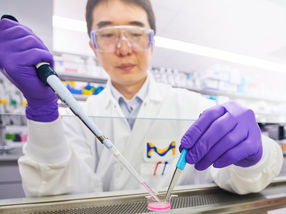Public research organisations behind 63 000 inventions across Europe in the past two decades
Research-linked startups punch above their weight
Advertisement
A new study, developed by the EPO’s Observatory on patents and Technology with Fraunhofer ISI, highlights the role of Europe’s public research organisations (PROs) in advancing innovation. Covering 39 member states, the report shows that between 2001 and 2020, PROs contributed to nearly 63 000 European patent applications—almost 5% of all filings from European applicants. Just 10 institutions, led by France and Germany, accounted for 63% of these, with the French National Centre for Scientific Research (CNRS), French Alternative Energies and Atomic Energy Commission (CEA), Fraunhofer-Gesellschaft, National Institute of Health and Medical Research (INSERM) and Netherlands Organisation for Applied Scientific Research (TNO) topping the list. PROs are increasingly commercialising their inventions, with the ratio of direct-to-indirect patent filings rising from 4.4 to 6.9. biotechnology and pharmaceuticals were the leading fields, along with measurement, semiconductors, computer technology, and other strategic areas.
“Public research is one of Europe’s greatest strengths. This study highlights the vital role of our public research organisations and hospitals, whose inventions boost Europe’s competitiveness,” said EPO President António Campinos. “But to unlock their full potential, we must step up collaboration and accelerate the transfer of research into real-world technologies.”
Hospitals as hubs of research and medical innovation
European research hospitals contributed to over 17 400 European patent applications during the same period, with France, Germany and the UK in the lead. The top three hospitals were Greater Paris University Hospitals (APHP), Copenhagen University Hospital and Karolinska University Hospital in Stockholm. Hospitals, though still mainly contributing indirectly to patenting, recorded the strongest growth in filing their own patents between 2016 and 2020. Their ratio of direct-to-indirect applications more than tripled, showing a gradual move toward owning patents while continuing to play a key role in collaborative clinical innovation and translating research into patient-focused technologies.
Research-linked startups punch above their weight
The study also highlights the commercial impact of research-linked startups. More than 2 800 European startups have patent applications involving inventors from universities, PROs or hospitals. These account for over 27% of all startups in Europe with patent applications at the EPO. Yet, despite making up only a quarter of the total, they secured about half of all startup funding and nearly a third of deals and exits, underlining their key role in bringing research to market.
Other news from the department business & finance
Most read news
More news from our other portals
Something is happening in the life science industry ...
This is what true pioneering spirit looks like: Plenty of innovative start-ups are bringing fresh ideas, lifeblood and entrepreneurial spirit to change tomorrow's world for the better. Immerse yourself in the world of these young companies and take the opportunity to get in touch with the founders.

















































